What's New
Displaying results 751 - 760 of 4052
Resource | Presentations,
Browse and view tables, charts and graphs illustrating HIV/AIDS data availability in the Asia Pacific region.
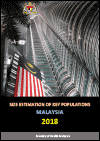
Resource | Publications,
Malaysia has a matured and concentrated HIV epidemic with prevalence rates remain above 5% among key populations (KP) including person who inject drugs (PWID), female sex worker (FSW), transgender people (TG) and men having sex with men (MSM). Since the first case of HIV infection in the country was reported in 1986, a combination of efforts mainly focused on KP were implemented to reduce HIV infections nationwide.
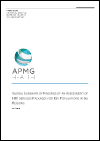
Resource | Publications,
In 2017, key populations (KP) and their sexual partners accounted for approximately 40% of new HIV infections globally (UNAIDS, 2018). A range of policy and legal barriers and harmful social dynamics increase the HIV vulnerability of KP and undermine their access to HIV and other services. The criminalization of sex between men, sex work, drug use and HIV transmission, as well as high rates of incarceration, homophobia, trans phobia, violence and social marginalization, all serve to influence risk practices and undermine access to services. People from key populations often migrate to cities in search of safer and more secure communities (UNAIDS, UN Habitat 2015). Women in key populations face specific challenges and barriers, including gender-based violence (GBV) and poorly tailored services. These factors further intensify their vulnerability to HIV.
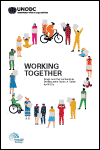
Resource | Publications,
The aim of this guide is to familiarize civil society to the Outcome Document of the 2016 United Nations General Assembly Special Session (UNGASS) on the world drug problem (UNGASS 2016) and highlight the potential for civil society participation in the implementation of the operational recommendations and their respective Sustainable Development Goals (SDGs). The guide uses examples from UNODC’s work and from NGOs around the world to demonstrate how they support the implementation of these international commitments related to drugs – in order to make the UNGASS Outcome Document and the SDGs easily understandable for civil society organizations on the ground, and to demonstrate the linkages between them.
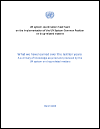
Resource | Publications,
Drug markets are evolving at unprecedented speed. The range of substances and combinations available to users has never been wider, and the amounts produced have never been greater. Cultivation and manufacturing of heroin and cocaine have reached record highs, synthetic drugs continue to expand, and the market for new psychoactive substances (NPS) remains widely diversified with a growing interplay with traditional drug markets. The non-medical use of regulated prescription drugs (either diverted from licit channels or illicitly manufactured) is becoming a major threat: in addition to the ongoing opioid epidemic in North America, there are signs of an opioid epidemic due to the non-medical use of tramadol in North and sub Saharan Africa, as well as in the Middle East. Drug-related deaths are on the rise. At the same time, access to controlled drugs for medical purposes remains a dramatic problem in most lowand middle-income countries.
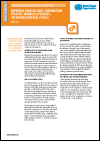
Resource | Publications,
The WHO had received notification of 32 cases of urethral fistula following male circumcision (MC) procedures performed in voluntary medical male circumcision (VMMC) between 2014 and 2018. While such adverse events are rare, this technical brief provides information to improve practice. This brief is based on the information from those events. It addresses the potential practices that could lead to a fistula, and measures to reduce these complications through improved understanding by practitioners.
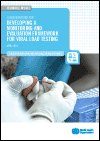
Resource | Guidelines,
The WHO consolidated guidelines on the use of antiretroviral drugs for treating and preventing HIV infection recommend viral load as the preferred monitoring approach to detect and confirm the failure of antiretroviral therapy. As countries invest in scaling up of routine viral load testing, measuring the impact of and progress towards achieving the UNAIDS target that 90% of people receiving antiretroviral therapy have suppressed viral loads by 2020 (as part of the 90 –90 –90 targets) is critical.
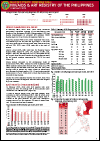
Resource | Fact Sheets,
In February 2019, there were 1,013 newly confirmed HIV-positive individuals reported to the HIV/AIDS & ART Registry of the Philippines (HARP). Fifteen percent (153) had clinical manifestations of advanced HIV infection (WHO clinical stage 3 or 4) at the time of diagnosis.
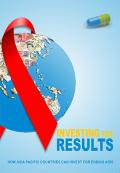
Resource | Publications,
This report examines the resource challenges that confront the AIDS response in Asia and the Pacific. It proposes a set of interventions that will help overcome them and steer the region towards ending its AIDS epidemic.
The report summarizes the analysis done by an independent, expert advisory panel on AIDS funding in Asia and the Pacific, convened jointly by UNAIDS and the World Bank in August 2013. The Expert Panel was tasked with reviewing the prospects for ending the region’s AIDS epidemic in the context of changing global economy and external funding environment.
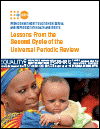
Resource | Publications,
The report assesses the successes, challenges and opportunities that the second cycle of the Universal Periodic Review (UPR) has offered for advancing and strengthening accountability on sexual and reproductive health and rights. It looks at the extent to which recommendations from the second cycle (2012–16) of the UPR have addressed sexual and reproductive health and rights (SRHR), and what issues within this field have received the most attention and which the least. It also looks at the type of recommendations that have been made in this area, and how Member States, UN Agencies and civil society actors have reported on SRHR issues, as well as differences across geographical regions. The report also assesses the extent to which SRHR recommendations from the first cycle have been implemented.





